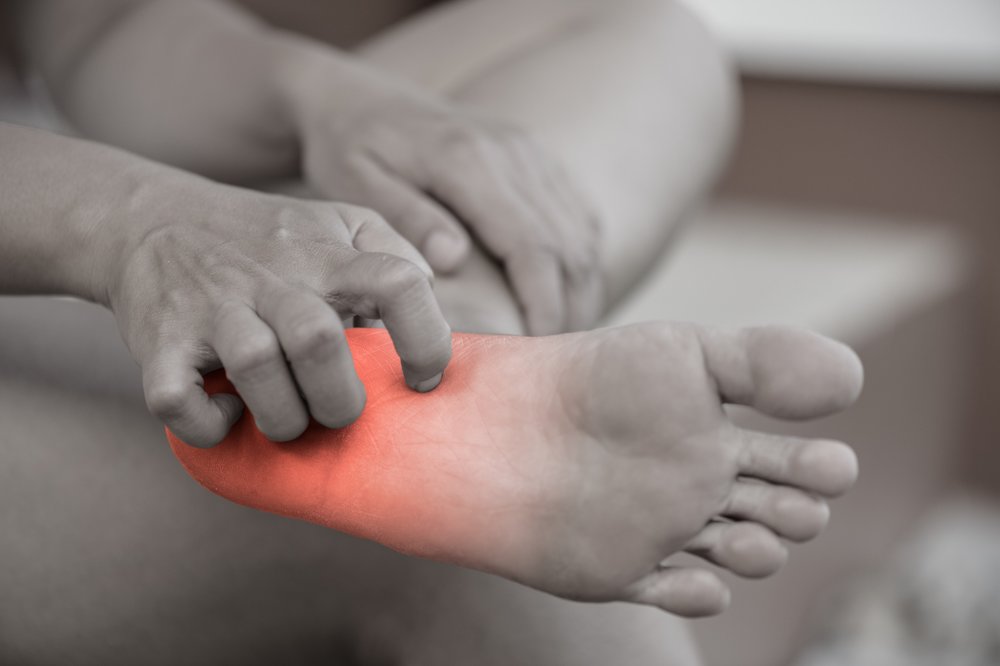This article will review stem cell therapy as a treatment for nerve pain (neuropathy)
What is Neuropathy?
Neuropathy, commonly known as peripheral neuropathy or nerve pain, is a term for many conditions that involve the peripheral nervous system. In general, this is damage to the vast communication network that sends signals between the brain and spinal cord to other parts of the body.
Nerve signaling in neuropathy is disrupted in three ways:
- loss of signals normally sent (like a broken wire)
- inappropriate signaling when there shouldn’t be any (like static on a telephone line)
- errors that distort the messages being sent (like a wavy television picture)
What are the symptoms of peripheral nerve damage?
Symptoms can depend on the type of nerve fibers affected, and the severity of damage.
Motor nerve damage is most commonly associated with:
- Muscle weakness
- Cramps
- Fasciculations (uncontrolled muscle twitching visible under the skin) and muscle shrinking.
Sensory nerve damage causes various symptoms because sensory nerves have a broad range of functions. Symptoms could include:
- Inability to feel vibrations and touch
- Numbness
- Lost sense of your position
- Inability to feel pain or temperature changes
- Pain (pain receptors can fire randomly. Or the damage can interfere with the signal to the brain, causing you to feel pain from a touch that is normally painless)
Autonomic nerve damage affects the axons in small-fiber neuropathies. Common symptoms include:
- Excess sweating, heat intolerance, inability to expand and contract the small blood vessels that regulate blood pressure, and gastrointestinal symptoms. Although rare, some people develop problems eating or swallowing if the nerves that control the esophagus are affected.
There are several types of peripheral neuropathies, the most common of which is linked to diabetes. Another serious polyneuropathy is Guillain-Barre syndrome, which occurs when the body’s immune system mistakenly attacks the nerves in the body. Common types of include carpal tunnel syndrome, which affects the hand and the wrist, and meralgia paresthetica, which causes numbness and tingling on one thigh. Complex regional pain syndrome is a class of lingering neuropathies where small-fibers are mostly damaged.
How can stem cells help treat nerve pain (neuropathy)?
Stem cell therapy can eliminate nerve pain. Stem cell therapy with human umbilical cord tissue derived mesenchymal stem cells (HUCT-MSCs) corrects the degenerative process by providing cells that can turn into nerves that replaces the lost or damaged nervous tissue, as well as regenerate the damaged cells. Stem cells do this by secreting healing activators such as growth factors, cytokines, and exosomes to the surrounding environment.
This therapy is the most highly sophisticated treatment for pain management since it not only “manages” the pain but also heals and regenerates the tissue naturally. Put simply, stem cells provide the damaged nervous tissue with the biological material needed to have healthy, functioning nerves. In autoimmune related nerve damage, the stem cells regulate the immune system. Signaling the immune system to go from an inflammatory state to an anti-inflammatory state, and stop attacking the bodies nerves. This leads to a regeneration from the stem cells and less (or an elimination ) of nerve pain.

What locations of nerve pain can be treated with stem cell therapy?
Common areas for stem cell treatment of nerve pain are feet, lower legs, and hands where pain, burning, tingling, and numbness can develop. This is typically accomplished with a perineural injection, an injection of stem cells near the damaged nerve(s). Stem cell therapy can also treat systemic nerve damage, such as that seen in multiple sclerosis, Crohn’s disease, or chronic infections like Guillain-Barre syndrome or Lyme’s disease.
What are the advantages of using allogenic (not the patient’s own) umbilical cord tissue derived stem cells?
- Umbilical cord tissue is one of the most abundant sources of stem cells, producing a greater number and quality of stem cells
- Stem cells are immune privileged, meaning there is no rejection by our bodies when administered
- Using HUCT means there’s no need for invasive procedures seen in bone-marrow or adipose derived stem cells. These methods also tend to produce inferior numbers and poorer quality of stem cells.
- There is evidence that HUCT-MSCs are a more viable source compared to other MSC sources. Meaning they perform better at what MSCs do naturally.
- HUCT-MSCs can be administered safely numerous times, each time adding more and more benefit. Unlike steroid injections which end up damaging your joints even more if administered to often.
How is Innate Healthcare’s stem cell therapy protocols different from other clinics?
We follow very we researched protocols from all over the world that achieve the best results. In addition, we treat using a very holistic, comprehensive approach. Some patient’s protocols may vary, as everyone is treated according to their unique presentation:
- Peri-neural administration of stem cells and/or exosomes with platelet rich plasma (PRP). A numbing solution is applied to the joint before treatment.
- Included with the treatment is acupuncture to facilitate the healing
- Herbal medicines, nutraceuticals, and nutritional guidelines are provided to encourage nerve growth and healing after the treatment.
- After 4 weeks another treatment as described above is given.
- Patients are encouraged to return to the clinic weekly for additional care during following months
Find More Success Stories HERE and HERE
How can I get evaluated?
Simply set-up a consultation and exam with us and we’ll provide you with the best recommendation for treatment(s). Schedule yourself by clicking the link below or call us at 602.603.3118.
-Dr. Travis Whitney






